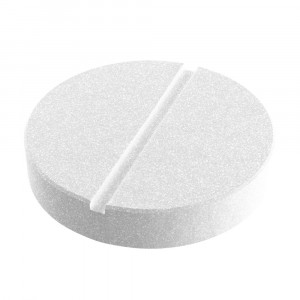 Welcome
Welcome
“May all be happy, may all be healed, may all be at peace and may no one ever suffer."
- A
- B
- C
- D
- E
- F
- G
- H
- I
- J
- K
- L
- M
- N
- O
- P
- Q
- R
- S
- T
- U
- V
- W
- X
- Y
- Z
Taxedol 80mg / vial
Neurocet 500mg / 5ml
Doxorubicin HEXAL 2mg / ml
Doxotor 2mg / ml
Nutrimin-D 7% + 10%
Docefrez 20mg / vial
Levobac 500mg / 100ml
Oxaliplatin SANDOZ 5mg / ml
IV Infusion - Brands
IV (intravenous) infusion is a method of delivering fluids, medications, and nutrition directly into the bloodstream through a vein. This method of administration is commonly used in hospitals and clinics to treat various medical conditions. Here are some general steps for using IV infusion:
- Preparation: Before starting an IV infusion, the healthcare provider will assess the patient's medical history, vital signs, and fluid and electrolyte levels. They will also choose the appropriate IV catheter size and select the solution and medication that will be administered.
- Catheter insertion: The healthcare provider will clean the patient's skin with an antiseptic solution and insert the IV catheter into a vein. The catheter is usually inserted into the arm, hand, or wrist.
- Connecting the IV tubing: The healthcare provider will connect the IV tubing to the catheter and secure it in place with tape. The tubing will be connected to a bag of fluids or medications that will be administered.
- Adjusting the infusion rate: The healthcare provider will adjust the infusion rate based on the patient's needs and condition. They will monitor the patient's vital signs and urine output during the infusion.
- Post-infusion care: After the infusion is complete, the healthcare provider will remove the catheter and apply pressure to the insertion site to prevent bleeding. They will also monitor the patient for any adverse reactions or complications.
Here are some important tips to keep in mind:
- Always use a sterile technique when inserting the IV catheter and handling the IV tubing.
- Monitor the patient's vital signs, urine output, and electrolyte levels during the infusion.
- Observe the patient for any signs of infection, infiltration, or phlebitis.
- Make sure to document the infusion, including the date, time, solution, medication, and infusion rate.
Overall, IV infusions is a common method of delivering fluids and medications directly into the bloodstream. It's important to follow proper techniques and safety measures to prevent infection and ensure effective treatment. If you have any questions or concerns, speak with your healthcare provider.
How to use IV Infusion?
Intravenous (IV) infusion is a medical technique that involves delivering fluids, medications, or nutrients directly into a patient's veins through an intravenous catheter. It is commonly used in hospitals and clinics to provide immediate and accurate delivery of medications or fluids.
Here are the general steps for administering an IV infusion:
- Assess the patient's medical history, allergies, vital signs, and laboratory values to determine the appropriate type and dose of medication or fluid to be infused.
- Select the appropriate type and size of an intravenous catheter and insertion site based on the patient's condition and the medication or fluid to be infused.
- Clean and prepare the insertion site with an antiseptic solution and allow it to dry.
- Apply a tourniquet to the patient's arm and ask them to make a fist to increase the visibility and accessibility of the veins.
- Insert the catheter needle into the selected vein and advance it until blood return is obtained, confirming proper catheter placement.
- Secure the catheter in place with adhesive tape or a securing device.
- Connect the catheter to an infusion set and a sterile container of medication or fluid, making sure to prime the tubing to remove air bubbles.
- Adjust the infusion rate and volume according to the prescribed protocol or the healthcare provider's orders.
- Monitor the patient's vital signs, urine output, and other clinical parameters regularly to ensure safety and efficacy.
- Discontinue the infusion and remove the catheter according to the healthcare provider's orders or when the infusion is complete.
It is important to follow the specific instructions provided by the healthcare provider or the medication label when administering an IV infusion, including the proper dosage, rate, and precautions to minimize the risk of complications such as infection, infiltration, or extravasation. If you have any questions or concerns about administering an IV infusion, talk to your healthcare provider or pharmacist for guidance.

LC Soap

Ear Drop

IM Injection

Lotion

Tablet

Topical Gel

Tablet (SR)

Saline
IV Infusion, How to use IV Infusion, আইভি আধান
To be happy, beautiful, healthy, wealthy, hale and long-lived stay with DM3S.